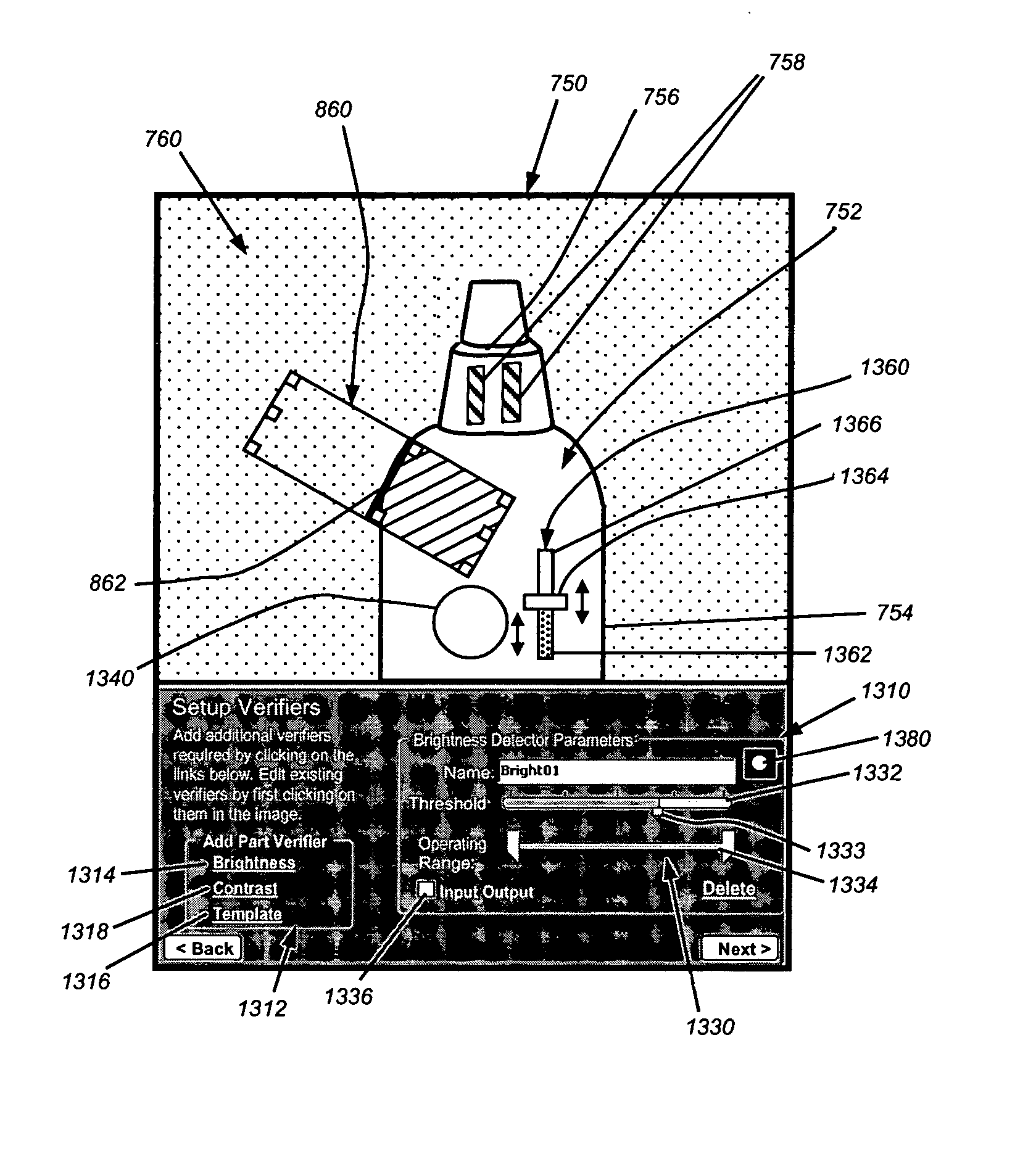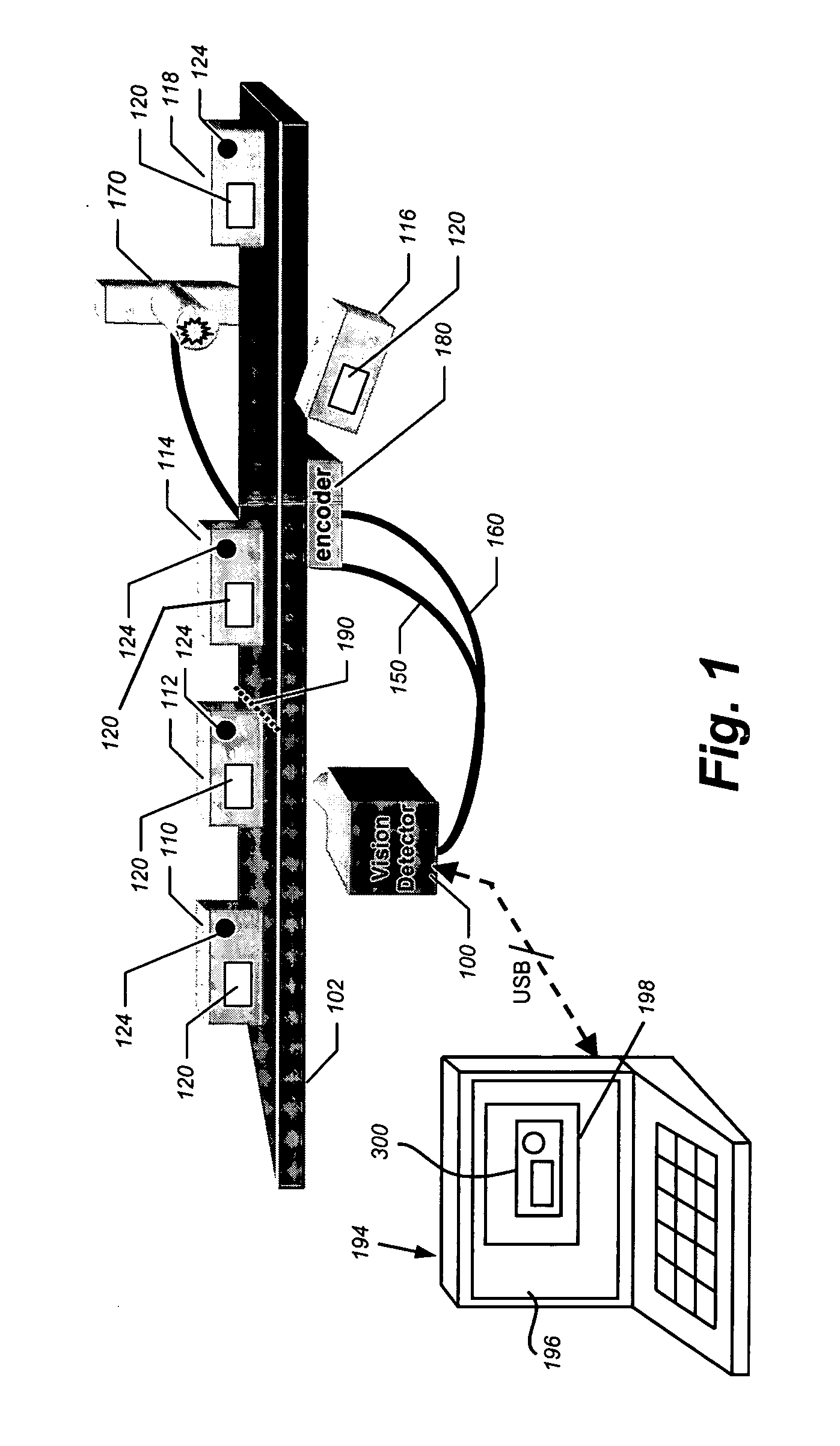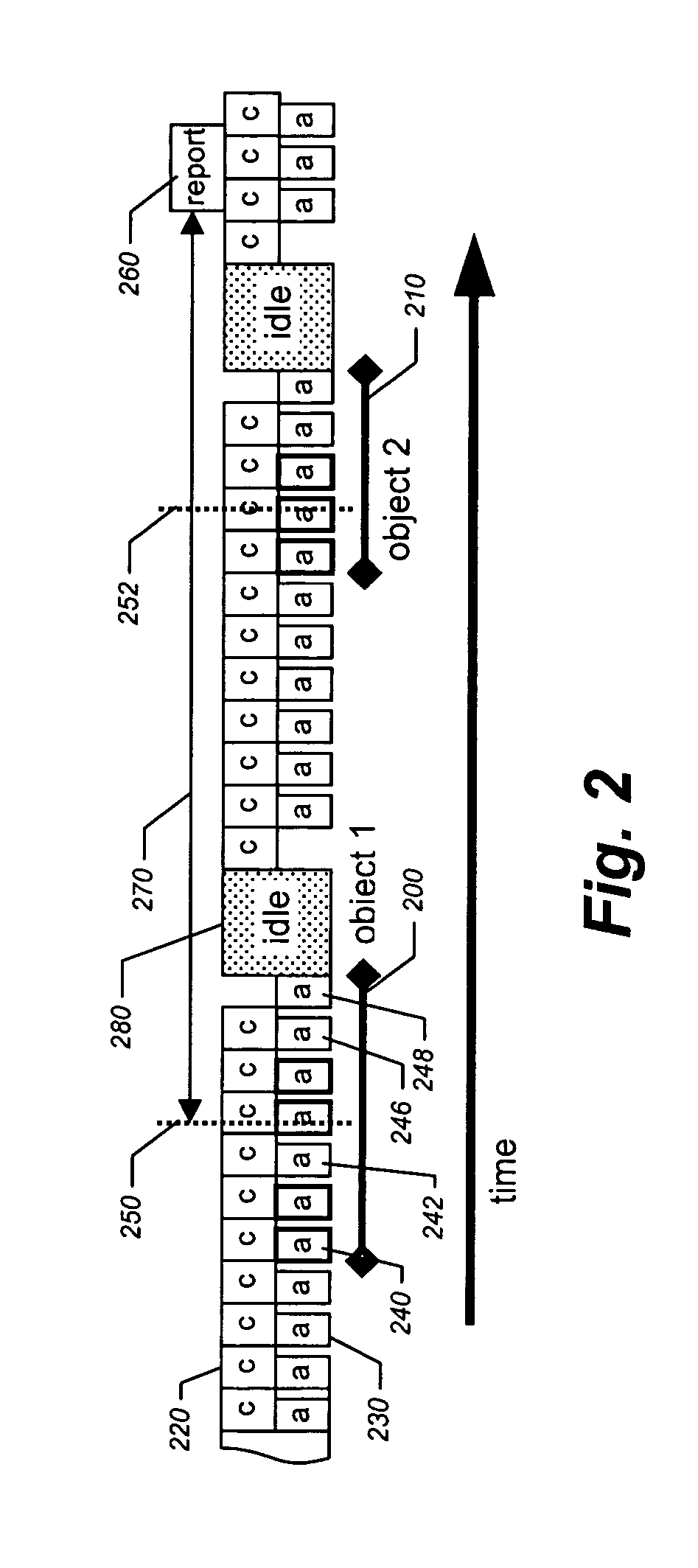System and method for displaying and using non-numeric graphic elements to control and monitor a vision system
a visual system and graphic element technology, applied in the field of visual systems, can solve the problems of difficult to arrange the photodetectors, the simple sensing of light intensity reflected from a point on the object is often insufficient for inspection, and the automatic inspection using photodetectors
- Summary
- Abstract
- Description
- Claims
- Application Information
AI Technical Summary
Benefits of technology
Problems solved by technology
Method used
Image
Examples
Embodiment Construction
[0063]FIG. 5 shows a high-level block diagram for a vision detector 500, which can be used in connection with an embodiment of this invention. The vision detector 500 operates in a production environment. It is expressly contemplated that the teachings of this invention are applicable to any type of vision system that captures and analyzes images of objects and provides a means for monitoring the function of certain operating parameters of the vision system via an HMI. The HMI may be either permanently connected or removable, and where removable, typically is used for setup of operating parameters and monitoring / testing of vision system function based upon the set operating parameters. Thus the vision detector used herein is exemplary of a variety of vision systems that employ settable operating parameters through an HMI.
[0064] The vision detector 500 of this exemplary embodiment functions generally in accordance with principles described in the above-incorporated-by-reference METH...
PUM
 Login to View More
Login to View More Abstract
Description
Claims
Application Information
 Login to View More
Login to View More - R&D
- Intellectual Property
- Life Sciences
- Materials
- Tech Scout
- Unparalleled Data Quality
- Higher Quality Content
- 60% Fewer Hallucinations
Browse by: Latest US Patents, China's latest patents, Technical Efficacy Thesaurus, Application Domain, Technology Topic, Popular Technical Reports.
© 2025 PatSnap. All rights reserved.Legal|Privacy policy|Modern Slavery Act Transparency Statement|Sitemap|About US| Contact US: help@patsnap.com



